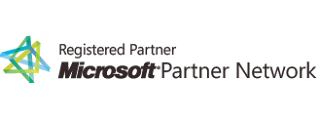Microsoft Dynamics AX
Microsoft Dynamics AX was first sold
in 1998 under the name Axapta, and since then it has been sold and implemented
in a number of mid-tier enterprise markets. However, up until now, other ERP
software such as SAP and Oracle has always dominated the market, meaning that
Microsoft Dynamics AX has always been considered to be the ERP software lurking
in the shadows. But now all this is due to change. For a number of years,
Microsoft have been taking considerable steps to ensure that Dynamics AX is
ready to compete against SAP and Oracle in multinational enterprise markets.
Now, all the hard work that Microsoft have put into Dynamics AX is coming to
fruition. This means that now is a great time for SAP and Oracle consultants to
consider a career move into Microsoft Dynamics AX. Here are the reasons why
this career move should be considered:
Organizations are now viewing SAP and Oracle in a different light
Microsoft have ensured that the functionality of
Dynamics AX is no longer just on par with SAP and Oracle, but is actually more
functional than them in a number of different ways. For example, Dynamics AX is
now considered to be far easier and cheaper for businesses to implement, which
has resulted in many clients now.
p erceiving SAP and Oracle to be expensive, complex and cumbersome pieces of
software.
·
The other major reason why organizations are
viewing SAP and Oracle in a different light is because most of
them already use other Microsoft products such as Outlook, Office, Excel
and Powerpoint. This means that Microsoft Dynamics AX gives users a
‘familiar experience’, which a lot of organizations appreciate as it means
that the software is easier to adopt—which in turn helps to drive efficiencies.
This changing perception of SAP and Oracle is a fantastic reason why a career
move into Dynamics AX is a great idea.
Dynamics AX is at the beginning of a huge growth curve
Within a twenty-page review released
in June this year, Gartner the American information technology and advisory
firm, stated that they considered Microsoft Dynamics AX to be a “leader” and
“innovator” in the ERP software field. This was largely due to the
functionality and scalability of Microsoft Dynamics AX.
Reviews like this really do suggest
that Dynamics AX is evolving and is at the beginning of a large growth curve,
perhaps where SAP and Oracle were a decade ago. Because of reviews like the one
mentioned above, and the fact that Dynamics AX is bound to undergo exponential
growth, it is extremely likely that Dynamics AX is going to be the upgrade of
choice for many industry leaders.
There’s a lack of experienced Dynamics AX ERP consultants
The lack of experienced ERP
consultants that have successfully implemented Microsoft Dynamics AX at
enterprise level is a huge challenge for Microsoft. However, this means that
there is a real demand for Dynamics AX consultants. Thus, there is a real
opportunity for SAP, Oracle, JDE and Baan consultants, to use the undoubted
emergence of Dynamics AX and to join the ‘upper end’ of the Dynamics channel
and enjoy another decade of unrelenting demand.
All of the above are great reasons why if you’re a SAP or Oracle consultant you should consider a career move into Dynamics AX.
All of the above are great reasons why if you’re a SAP or Oracle consultant you should consider a career move into Dynamics AX.
To find out how to make the switch
and transition your ERP experience, get in touch:
Cognitive Group are specialists in
Microsoft Dynamics jobs and recruitment with a focus on Microsoft Dynamics AX,
Microsoft Dynamics CRM and other roles in the Microsoft Stack:
More Informastion Please Visit my WebSite:-http://shrishail.com/


















